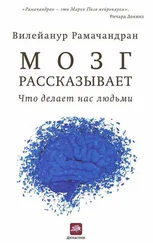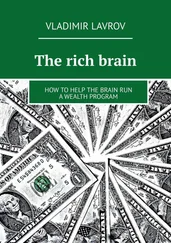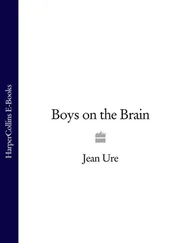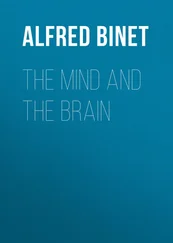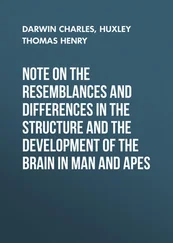Simmel, Mary Ann, 269n
Sinclair-Gieben, A.H.C., 294n
Singer, W., 296n
size-contrast illusion, 82–83, 82
skin, sensations arising from, 33–34
Slater, E., 285n
sleep, REM (rapid eye movement), 147–148, 282n
smell, 6–7, 10, 177
smiling, 13–14, 291n
grimace compared with, 207, 210–211, 291n
lying and, 278n
Snyder, A., 287n
social self, 254
sociobiology, see evolutionary psychology somatoparaphrenia, vii, 2, 131, 143, 249, 278n
Sorenson, Tom, 20–22, 28–31, 33–35, 38, 40, 50, 268n
Spanos, N.P., 294n
spatial representation, 115, 120–121, 125
speculation, xv-xvi Sperry, R.W., 280n
spinal cord, 9, 9 , 16 , 33, 48
dorsal rhizotomy and, 27, 33
motor system and, 44, 45
split brains, xiii, 10, 280n
spontaneous activity, 275n
spontaneous remissions, 214–215
sports, spatial orientation in, 83
Springer, S., 280n
sprouting, 34, 35
Squire, Larry, 265n
Starkman, M., 294n
Star Wars (movie), 83
Stenstrom, R.S., 294n
stereoscopic vision, 94, 273n
Steve (neglect syndrome patient), 118–119, 120
Stevenson, Robert Louis, 224
Stoddard, Rick, 60
“Stream of Thought, The” (James), 276n
stroke, 2, 12–13, 14
blindness and, 73, 75
neglect syndrome and, 113, 114, 119, 277n
number sense and, 17–19
paralysis and, 48, 119, 127–128
in right hemisphere, 114, 117, 127–128, 134, 142, 144, 277n
Stroop interference, 295n
subjective sensation, see qualia suicidal tendencies, 12–13, 22
sun, xiv, 68, 69n, 271n
superior colliculus, 73, 74
supplementary motor area, 44, 201, 249
Susan (denial patient), 283n
Susan (epilepsy patient), 201
Sutherland, Stuart, 228
swastika pattern, blind spot and, 94, 95
sweating, 164
see also galvanic skin response
symbolic description, 66–67
Symons, Don, 288n, 290n
synapses, 8, 8
synesthesia, 297n–298n
table-tapping illusion, 60, 61
tadpoles, regeneration in, 5–6
Taub, E., 267n
Tecoma, Evelyn, 185–186, 286n
telescope, xiv
temporal lobe epilepsy, xvi, 1, 7, 248–249, 285n
galvanic skin response and, 185–187, 285n–286n
religious experience and, 175–177, 179–188, 285n–286n
temporal lobe personality, 180–188, 285n
temporal lobes, ix, 9, 9 , 74 , 77, 78–79, 101, 228, 265n
consciousness and, 244–246
object recognition and, 115, 116, 162, 165, 284n
religious experience and, 175–177, 179–188, 286n
see also amygdala; hypothalamus; insular cortex; septum
textures, 64, 79–80, 101, 102, 103, 275n
thalamus, 9, 10, 13, 16 , 33, 74, 109, 163 , 175, 252
“theory of other minds” module, 296nThiruvengadam, K.V., 6–7
Thomas, Dylan, 188
Thomas, Lewis, ix, xii, 127, 218
Thomas, M., 287n
Thompson, K., 296n
threat:
emotional arousal in response to, 163–164
perception of, 116–117
threat grimace, smile compared with, 207, 210–211, 291n
Through the Looking Glass (Carroll), 124, 158
Thurber, James, 85–87, 86 , 104, 112, 272n
tickling, ix, 208, 291n“tinkering” strategy, 5
toes, sucking of, 3, 37
tokens vs. types, 170
Tom (savant), 192–193, 195
Tooby, J., 288n
touch, 33–34, 38, 39, 177
phantom pain and, 50–51, 54–55
Tovee, M.J, 239, 284n
Townsend, Robert, 52–54
transcranial magnetic stimulator, 174–175, 284n
translation barrier, 231–232, 283n, 296n
transsexuals, 270n, 294n
tray experiment, 137–138
trichromacy, 264n
Trimble, M.R., 285n
Trivers, Robert, 254–255, 278n–279n
Tudor, Mary, 294n
ulcers, cause of, xv, xvi
ultra-Darwinists, 209–210
unconscious, viii-ix, 156, 235
unconscious inference, 68, 270n
Ungerleider, Leslie, 74
unified self, 251–252
universe, geocentric vs. heliocentric view of, xiv, 156
Upanishads , 157
Van der Berghe, L., 289n
Van Essen, David, 272n
Van Hoesen, G.W., 284n
Venus’s-flytrap, 239–240
vertical black line experiment, 91, 92
vestibular cortex, 147
vestibular nerve, 147
V4 (visual area), 72–73, 81, 272n
vigilant self, 252–253
“virtual reality” device, viii, 46–49, 52–55
denial patients and, 140–141
Dolan-Frith experiment with, 141–142, 280n
vision, visual system, 63–112, 177, 232–233, 271n–275n
assumptions of, 68, 69 , 271n
binocular, 89–90
bottom-up view of, 109, 110, 111
color, 11, 64, 72–73, 79–80, 81, 102, 110, 111, 185, 230, 264n, 272n, 278n
contradictory evidence and, 91, 93, 93
double, 274n
foveal, 80
imagination and, 112
multiple specialized areas of, 72–73, 77, 80, 81, 102, 272n
neglect syndrome and, 115
organization of, 73, 74
Parkinson’s disease and, 270n
phantom limbs and, 43, 46–49, 54–55
right hemisphere and, 133–134
size-contrast illusion and, 82–83, 82
statistical regularities and, 103–104
stereoscopic, 94, 273n
subjective experience and, 55
top-down view of, 109, 110, 111, 275n, 297n
see also blindness; blind spots; “how” pathway; “what” pathway
Vision of the Brain, A (Zeki), 71
visual categories, Capgras’ syndrome and, 170–171
visual cortex, 70, 71, 74, 233, 284n, 296n
migraines and, 89
primary, 70, 71, 72, 73, 75, 76, 77, 81, 109, 110, 115, 275n
visualization therapy, 111
volume control (gate control), 51
von Cramon, D., 272n
Wall, Patrick, 267n
Wallace, Alfred Russel, 189–192, 198
Ward, Betty, 140–141
warmth, 33–34, 50
Warrington, Elizabeth, 265n
warts, hypnosis and, 218–219, 294n
Watson, James, 63, 263n
Waxman, S.G., 285n
Wegener, Alfred, 223
Weil, Andrew, 221
Weisel, Torsten, 271n
Weiskrantz, Larry, 75–76, 265n, 272n
Wernicke’s aphasia, 277n, 280n
Wernicke’s area, 245
What Is Life? (Schrödinger), xii
“what” pathway, 74 , 77–82, 110, 111, 115, 240, 247, 277n, 283n
Wheeler, John Archibald, xi
“where” pathway, see “how” pathway
“Why Do Gentlemen Prefer Blondes?” (Ramachandran), 202, 289n–291n
Wieser, H.G., 285n
Williams, G., 288n
Wills, Christopher, 274n, 286n, 294n
Wilson, E.O., 288n
Wilson, M., 288n
Wiltshire, Stephen, 287n
Winson, J., 283n
Wright, R., 285n
writer’s cramp (focal dystonia), 269n
Yang, Tony, 31
Yap, G.S., 280n
yawning, 14
Young, A.W., 284n
Zeki, Semir, 9 , 71 , 221, 272n
Zihl, J, 272n
Zuk, M., 289n


